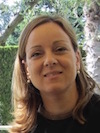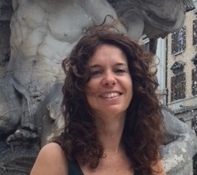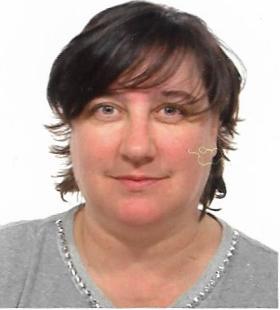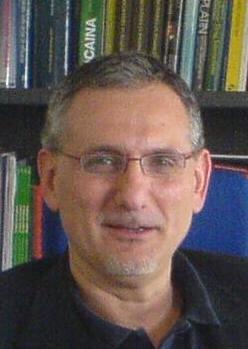Studying at the University of Verona
Here you can find information on the organisational aspects of the Programme, lecture timetables, learning activities and useful contact details for your time at the University, from enrolment to graduation.
Academic calendar
The academic calendar shows the deadlines and scheduled events that are relevant to students, teaching and technical-administrative staff of the University. Public holidays and University closures are also indicated. The academic year normally begins on 1 October each year and ends on 30 September of the following year.
Course calendar
The Academic Calendar sets out the degree programme lecture and exam timetables, as well as the relevant university closure dates..
| Period | From | To |
|---|---|---|
| INF BZ - 1° anno 1° sem | Oct 1, 2019 | Dec 20, 2019 |
| INF BZ - 2° anno 1° sem | Oct 1, 2019 | Dec 20, 2019 |
| INF BZ - 3° anno 1° sem | Oct 1, 2019 | Jan 31, 2020 |
| INF BZ - 1° anno 2° sem | Feb 3, 2020 | Apr 17, 2020 |
| INF BZ - 3° anno 2° sem | Apr 20, 2020 | Jun 8, 2020 |
| INF BZ - 2° anno 2° sem | Apr 20, 2020 | Jun 8, 2020 |
| Session | From | To |
|---|---|---|
| INF BZ - sessione invernale | Jan 7, 2020 | Feb 28, 2020 |
| INF BZ - sessione estiva | Jun 1, 2020 | Jul 31, 2020 |
| INF BZ - sessione autunnale | Sep 1, 2020 | Sep 30, 2020 |
| Session | From | To |
|---|---|---|
| 1^ SESSIONE | Oct 1, 2020 | Nov 30, 2020 |
| 2^ SESSIONE | Mar 1, 2021 | Apr 30, 2021 |
| Period | From | To |
|---|---|---|
| FESTIVITA' OGNISSANTI | Nov 1, 2019 | Nov 1, 2019 |
| FESTIVITA' IMMACOLATA CONCEZIONE | Dec 8, 2019 | Dec 8, 2019 |
| Vacanze di Natale | Dec 24, 2019 | Jan 6, 2020 |
| VACANZE DI PASQUA | Apr 10, 2020 | Apr 15, 2020 |
| FESTA DELLA LIBERAZIONE | Apr 25, 2020 | Apr 25, 2020 |
| FESTIVITA' DEL LAVORO | May 1, 2020 | May 1, 2020 |
| FESTA DELLA REPUBBLICA | Jun 2, 2020 | Jun 2, 2020 |
| Description | Period | From | To |
|---|---|---|---|
| INF BZ - tirocinio 3° anno 1^ esp | INF BZ - tirocinio 3° anno 1^ esp | Nov 17, 2019 | Dec 21, 2019 |
| INF BZ - tirocinio 2° anno 1^ esp | INF BZ - tirocinio 2° anno 1^ esp | Feb 3, 2020 | Mar 9, 2020 |
| INF BZ - tirocinio 3° anno 2^ esp | INF BZ - tirocinio 3° anno 2^ esp | Mar 2, 2020 | Apr 11, 2020 |
| INF BZ - tirocinio 2° anno 2^ esp | INF BZ - tirocinio 2° anno 2^ esp | Mar 16, 2020 | Apr 18, 2020 |
| INF BZ - tirocinio 1° anno 1^ esp | INF BZ - tirocinio 1° anno 1^ esp | Apr 20, 2020 | May 25, 2020 |
| INF BZ - tirocinio 1° anno 2^ esp | INF BZ - tirocinio 1° anno 2^ esp | Jun 1, 2020 | Jun 30, 2020 |
| INF BZ - tirocinio 3° anno 3^ esp | INF BZ - tirocinio 3° anno 3^ esp | Jul 6, 2020 | Aug 14, 2020 |
| INF BZ - tirocinio 2° anno 3^ esp | INF BZ - tirocinio 2° anno 3^ esp | Aug 11, 2020 | Sep 8, 2020 |
Exam calendar
Exam dates and rounds are managed by the relevant Medicine Teaching and Student Services Unit.
To view all the exam sessions available, please use the Exam dashboard on ESSE3.
If you forgot your login details or have problems logging in, please contact the relevant IT HelpDesk, or check the login details recovery web page.
Should you have any doubts or questions, please check the Enrollment FAQs
Academic staff
 liliana.favari@univr.it
liliana.favari@univr.it
 astrid.kustatscher@claudiana.bz.it
astrid.kustatscher@claudiana.bz.it
 sylvia.lintner@sabes.it
sylvia.lintner@sabes.it
 m.mussner@virgilio.it
m.mussner@virgilio.it
 loredana.pancheri@univr.it
loredana.pancheri@univr.it
 sara.pilotto@univr.it
sara.pilotto@univr.it
 0471067355
0471067355
 luisa.valer@claudiana.bz.it
luisa.valer@claudiana.bz.it
Study Plan
The Study Plan includes all modules, teaching and learning activities that each student will need to undertake during their time at the University.
Please select your Study Plan based on your enrollment year.
1° Year
| Modules | Credits | TAF | SSD |
|---|
Professional Laboratories (1st year)
2° Year activated in the A.Y. 2020/2021
| Modules | Credits | TAF | SSD |
|---|
Professional Laboratories (2nd year)
3° Year activated in the A.Y. 2021/2022
| Modules | Credits | TAF | SSD |
|---|
Professional Laboratories (3rd year)
| Modules | Credits | TAF | SSD |
|---|
Professional Laboratories (1st year)
| Modules | Credits | TAF | SSD |
|---|
Professional Laboratories (2nd year)
| Modules | Credits | TAF | SSD |
|---|
Professional Laboratories (3rd year)
Legend | Type of training activity (TTA)
TAF (Type of Educational Activity) All courses and activities are classified into different types of educational activities, indicated by a letter.
Pathophysiology applied at Nursing (2019/2020)
The teaching is organized as follows:
INFERMIERISTICA CLINICA
Credits
3
Period
See the unit page
Location
BOLZANO
Academic staff
See the unit page
Learning outcomes
The course introduces the student to the basic concepts of major diseases and the fundamental pathogenetic processes, allowing them to correlate cellular homeostatic mechanisms to alterations of the organ functions and clinical manifestations of disease. Students will understand the basic principles of pharmacology, especially in pharmacokinetic and pharmacodynamic mechanisms, and the benefit and risk profile of the drugs. The course will helps students to develop an approach oriented to prevention, assessment and management of respiratory, urinary and intestinal function alteration and the multidimensional assessment of pain. PHARMACOLOGY: The course aims to provide general knowledge about the functions and the use of drug therapy, in the fields of pharmacodynamics, pharmacokinetics, pharmacoepidemiology and pharmacovigilance. Concepts of pharmacology are essential to the development of the nurse's own skills in management and control of drug therapies, as well in patient education. This course is preparatory to the study of the individual classes of drugs, which starts with anti-inflammatory and antibacterial drugs and will be completed in the clinical pharmacology module. SEMEIOTICS AND PHYSIOPATHOLOGY: The course introduces the student to the fundamental concepts of pathophysiology and semiotics, implicated in the activation of organ damage and in the development of the main diseases. The information necessary for understanding the set of events leading to the disease will be selected using a practical approach. Any further details will be reserved for the lessons that specifically deal with the organ and the apparatus. Every fundamental alteration will be explored within a specific organ and the different peculiar manifestations of the organ itself will be clarified. The lessons will also include the semeiotic part, describing the objective signs that characterize diseases. The treatment of semeiotics will be performed after treating the pathophysiology of the various organs. At the end of the course, students must be able to know the general mechanisms that lead to the disease and to identify their characteristics. CLINICAL NURSING I and II: The course offers the contents and the assistance methodology related to person's needs and to "fundamental" nursing care. The course will helps students to develop an approach oriented to prevention, assessment and management of respiratory, urinary and intestinal function alteration and the multidimensional assessment of pain. During teaching, frontal teaching methods will be privileged associated with sessions of application of the contents treated in care situations (guided exercises, video projections, clinical case analysis, testimony readings will be used to analyze and reflect on the perceptions and needs of the patients and family members). GENERAL PATHOLOGY: The course develops the preparatory contents for understanding the basic mechanisms of diseases. The following contents will be covered: the general principles and disorders of homeodynamics of complex systems, the main pathogenic esogenous and endogenous factors, biological damage, responses to damage, with particular reference to inflammation, the processes of healing and chronicity, immunity , haemostasis and thrombosis, vascular pathology and notions of general oncology. The course aims to help the student to understand the essential links between clinical analysis and fundamental mechanisms, facilitating the reading of the conceptual basis of the disease.
Program
------------------------
MM: FARMACOLOGIA GENERALE
------------------------
Basic principles in Pharmacology and introduction to the drugs in the market Definition of drug, active substance, pharmaceutical product, vehicle, eccipient, the placebo effect Evaluation of the drugs’ efficacy: the randomized clinical trial Different sources of drugs. How the drugs enter in the market Bioequivalent and biosimilar drugs The italian market for drugs. The drug prescription: fascia A e C, OTC and SOP drugs, different type of prescriptions Indications and contraindications. The off-label use How to measure the drug use: the DDD Pharmacodynamic Basic principles of the mechanism of action of drugs (drug’s receptor, drug-receptor interaction: agonism and antagonism) Pharmacokinetic Drug’s absorption. Main characteristics of different drug administration routes: advantages and disadvantages. The bioavailability of drugs. Food-drugs interactions The drugs’ distribution in the body. Factors that can influence the drugs’ distribution: the blood-brain and placentar barriers Characteristics of drug metabolism. Enzyme induction and inhibition Drug’s clearance. Factors that may alter influence drug’s clearance Definition and meaning of dose, maximum dose, daily dose, dosing, therapeutic index, clearance, half-life, peak blood levels, therapeutic range, toxic concentrations, accumulation Relationship between plasma concentrations of drugs and their action Factors to be taken into account in determining the dose of a drug, and in the case of repeated administrations, the dosing interval. How to calculate pharmaceutical doses. Pharmacotherapy Basics of risk/benefit and cost/benefit analyses for drugs. Adverse drug reactions: mechanisms and risk factors. The spontaneous reporting system of adverse drug reactions: regulation and role for nurses Antibacterial drugs: general issues and characteristics of the main classes of antibacterial drugs Basics of antivirals and vaccines Non-steroidal anti inflammatory drugs (NSAIDs)
------------------------
MM: SEMEIOTICA E FISIOPATOLOGIA
------------------------
------------------------
MM: INFERMIERISTICA CLINICA
------------------------
------------------------
MM: PATOLOGIA GENERALE
------------------------
Syllabus • Introduction to general pathology. Concepts of homeostasis and functional reserve organ. The disease: definition, causes (congenital and acquired diseases); concept of pathogenesis. • cellular pathology: General concepts: steady state cell and tissue and its alterations: a) degenerative changes in the cells (reversible and irreversible cell damage) and cell death (necrosis, apoptosis). Types of necrosis b) Amendments of volumetric cells (hypertrophy, atrophy, atrophy) and their causes c) numerical modifications of cells (hyperplasia, hypoplasia, aplasia) and their causes d) Alterations of cellular differentiation processes (metaplasia, anaplasia, dysplasia). • Inflammation: General concepts: inflammation as a reaction of the body to harmful agents Types of inflammation: a) Acute inflammation: - General and fundamental moments Features (hyperemia, exudation, chemotaxis) - Outline of chemical mediators of inflammation - Particular aspects of acute inflammation (inflammatory erythematous, serous, catarrhal, purulent, fibrinous, hemorrhagic and necrotizing), and their consequences on the organism (payments, phlegm, abscesses, phlegmon, fistula, empyema, whites, adhesions, synechiae, pseudomembrane, necrosis ...) - Evolution of acute inflammation b) Chronic inflammation: - Features and pathogenetic mechanisms - The granulomas. Main granulomatous diseases - Useful and harmful effects of inflammation - General Manifestations of inflammation (Fever, leukocytosis, synthesis of acute phase proteins, muscle breakdown, changes in serum iron and zinchemia, endocrine disorders, etc. ...) • The healing process of a wound: Phases of wound healing: coagulation, formation of granulation tissue scarring. Complications of the healing process: infection, dehiscence, keloid formation. • General oncology: - General characteristics of tumors: benign and malignant tumors. - The neoplastic cell: structural and functional aspects (atypia, anaplasia, characteristics of aggregation, replication mode ..) and give the guest mechanisms - Study the causes of cancer: epidemiological and experimental data - Overview of main chemical carcinogens, physical and biological - Overview of genes involved in the determinism of cancer (oncogenes and anti-oncogenes). - Natural history of cancer: initiation, promotion, progression, metastasis - Mechanisms of defense against cancer: relationship between immunity and cancer. - Systematics of neoplasms (nomenclature) • General Hemostasis: General observations about the normal hemostatic mechanisms. A) Deficit of haemostatic mechanisms: bleeding Causes of hemorrhage (vascular, platelet, coagulation deficit, from hyperfibrinolysis); local manifestations (petechiae, purpura, bruising, hematemesis, melena, hematuria, hemoptysis) and general (anemia, hypoxia) of bleeding disorders B) Thrombosis: General characteristics and pathogenesis of venous and arterial thrombosis; Consequences of thrombosis: angina and heart attack embolism signs (types of emboli, embolism consequences). • Immunology - Immune response: natural immunity and specific immunity. organs primary and secondary lymphoid. NK cells. - B cells and T: origin, characteristics and activation mode. - Concept of antigen. - Antibodies: characteristics and role in defensive processes - Overview of immune deficiencies - Autoimmunity: causes and and examples of autoimmune diseases. - The hypersensitivity reactions: General mechanisms of local and generalized hypersensitivity reactions (anaphylaxis, cytotoxic reactions, immune complex, delayed hypersensitivity): Examples of the most common hypersensitivity reactions.
Bibliography
| Author | Title | Publishing house | Year | ISBN | Notes |
|---|---|---|---|---|---|
| Singoli moduli | Vedi i libri indicati nei singoli moduli | 2019 | |||
| Anna Maria DI Giulio, Silvano Gabriele Cella | Farmacologia generale e speciale per le lauree sanitarie (Edizione 2) | Piccin | 2018 | 9788829929429 | |
| Taglialatela Conforti Cuzzolin Leone Mattioli Moretti Pignataro Vanzetta | Farmacologia per le lauree triennali e magistrali II Edizione (Edizione 2) | Sorbona | 2019 | ||
| Stefan Silbernagl & Florian Lang | Taschenatlas der Pathophysiologie | Thieme | 2013 | ||
| Stefan Silbernagl & Agamemnon Despopulos | Taschenatlas der Physiologie | Thieme | 2012 |
Examination Methods
written text with multiple choice questions
Career prospects
Module/Programme news
News for students
There you will find information, resources and services useful during your time at the University (Student’s exam record, your study plan on ESSE3, Distance Learning courses, university email account, office forms, administrative procedures, etc.). You can log into MyUnivr with your GIA login details: only in this way will you be able to receive notification of all the notices from your teachers and your secretariat via email and soon also via the Univr app.
Gestione carriere
Orario lezioni
COMUNICAZIONE DEL PRESIDENTE DEL COLLEGIO DIDATTICO
Carissime Studentesse,
Carissimi Studenti,
di seguito un promemoria relativo alle modalità di erogazione della didattica per il corso di studio in Infermieristica A.A. 2022/2023.
In ottemperanza alle linee guida della Commissione didattica di Ateneo, che prevedono una didattica improntata ad un pieno recupero delle modalità regolari di erogazione in presenza, la Commissione didattica del CdL nella seduta del 29 settembre 2022, ha deliberato il pieno ritorno all’utilizzo della didattica frontale in presenza.
Solo nei casi di comprovata positività al COVID-19, e/o in situazioni di particolare fragilità (sempre correlate alla pandemia) sarà previsto il collegamento sincrono in modalità streaming; a tal proposito ogni Docente, sulla propria pagina web, darà chiare indicazioni sulla modalità di fruizione della didattica.
La modalità asincrona (registrazioni delle lezioni) non è prevista.
Nell’augurarvi un buon Anno Accademico, vi saluto cordialmente
Prof. Paolo F Fabene
Guida ai programmi degli insegnamenti
Guida ai programmi degli insegnamenti
Documents
| Title | Info File |
|---|---|
|
|
pdf, it, 1594 KB, 12/12/22 |
|
|
pdf, it, 1310 KB, 02/09/21 |
Linee guida per riconoscimento cfu
Lo studente che intende chiedere il riconoscimento di moduli o insegnamenti pregressi dovrà presentare domanda, entro il 30 novembre dell’anno accademico in corso, seguendo le indicazioni indicate al link seguente: https://www.univr.it/it/i-nostri-servizi/segreterie-studenti/gestione-carriere-studenti-medicina-e-chirurgia/riconoscimento-crediti-acquisiti-da-una-carriera-pregressa-medicina
Documents
| Title | Info File |
|---|---|
|
|
pdf, it, 295 KB, 09/11/21 |
Student login and resources
Attività didattiche regime part-time
Modalità di richiesta
La domanda di iscrizione part-time può essere presentata all'inizio di ogni anno accademico e comunque entro il 30 novembre di ogni anno. Entro lo stesso termine, se necessario, lo studente potrà richiedere di tornare al regime full-time. Al link seguente la pagina del servizio https://www.univr.it/it/i-nostri-servizi/segreterie-studenti/flessibilita-nella-frequenza-dei-corsi/possibilita-di-iscrizione-part-time-e-ripristino-full-time
Una volta inviata la domanda, lo studente concorda in via preventiva con il Coordinatore della didattica professionale (CDP), il piano di studi che intende perseguire nel periodo di part-time compilando il modulo in allegato
Documents
| Title | Info File |
|---|---|
|
|
octet-stream, it, 1309 KB, 21/10/22 |
Graduation
Documents
| Title | Info File |
|---|---|
|
|
pdf, it, 242 KB, 19/01/24 |
|
|
pdf, it, 80 KB, 06/04/24 |
|
|
pdf, it, 43 KB, 06/04/24 |
|
|
pdf, it, 44 KB, 09/04/24 |
|
|
pdf, it, 148 KB, 06/04/24 |
|
|
pdf, it, 108 KB, 06/04/24 |
|
|
pdf, it, 115 KB, 06/04/24 |
|
|
pdf, it, 1487 KB, 18/02/22 |
|
|
pdf, it, 437 KB, 22/03/24 |
|
|
pdf, it, 957 KB, 22/03/24 |
|
|
pdf, it, 424 KB, 19/01/24 |











